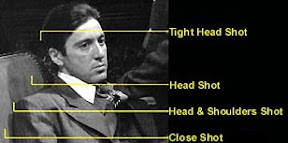
eForum: Subscribe!
WWWilde Archives
Acting in Person and in StyleSubscribe to my Open Class @ 3sisters
Actors on ActingSubscribe to my Open Class @ 12night
The Director's Eye Subscribe to my Open Class @ Directing!
How to Read a FilmSubscribe to Open Class @ 200x Aesthetics

Save This Page
From Stagematrix II. DIRECTOR & actors:
1. Actor + Play
2. Actor + Actor
3. Actor + Space
4. Actor + Self (Public)
Summary
1. Description -- Film Act2. An excerpt: "Camera acts!"
3. Table of contents
4. Review
Questions
HISTORY:Acting: An “Actor’s Director”
Griffith was known as one of the first “actor’s directors.” In a day when stage actors were the true celebrities and film actors were often treated as cogs in a machine, Griffith made film actors artists of their medium. Much of his camera innovation was designed to make film more effective, more humane, and therefore more cooperative with the actors. Griffith scheduled six weeks of rehearsals into the preproduction of The Birth of a Nation at a time when actors normally showed up with little idea of what they were going to do and were shouted through their motions on set. Lillian Gish was already a stage actress when Griffith “discovered” her for film. The two worked together on many shorts before The Birth of a Nation. Early silent film acting drew its techniques from the stage, with broad, obvious gestures that were meant to be seen by everyone in the audience no matter how far away they were seated. But this acting didn’t work on film. Griffith’s close-ups allowed for more subtle expressions of gesture.
None of the film’s prominent black roles were played by black actors, but instead by white actors in blackface who were painted with burnt cork. From the birth of cinema, American film has popularized and reproduced predominant stereotypes and perceptions that are held by society. Griffith purposely exploited as many of these stereotypes as possible in The Birth of a Nation. Black performers were forced into a narrow range of types, so they attempted to create complex characters within the confines of the roles they were given. Many of the black actors who worked on the film rose above stereotypes by creating resilience, humor, and humanity in their characters. This early struggle, encapsulating the historical and contemporary challenge of race relations, was the beginning of black cultural identity in American cinema.
Notes
Spring 2006. Teaching THR331 Fundamentals of Directing: Lesson 8. Actor & Self (Public as Actor' Self?)
FAITH
An actor must above all believe in what is happening around him . . . [and] in what he himself is doing. . . . From the instant when he is transported from the plane of actuality to that of an imagined life and believes in it, he can begin to create. We can use ordinary chairs to outline anything the imagination of an author, or director can ask us to create: horses, city squares, ships, forests. It will do no harm if we find ourselves unable to believe that this chair is a particular object because even without the belief we may have the feeling it arouses.
Truth on the stage is whatever we can believe in with sincerity, whether in ourselves or in our colleagues. Truth cannot be separated from belief, nor belief from truth . . . and without both of them it is impossible to live your part, or to create anything. Believe in what you yourself say or do on the stage and you will be convincing.
-- An Actor Prepares * Stanislavsky




 forum
forum  notes
notes  references
references  glossary
glossary  2007 & 2008 pomo.vtheatre.net | blogs 360.yahoo.com/anatolant + bloglines.com/blog/anatolant | knol.google.com/k/anatoly-antohin
2007 & 2008 pomo.vtheatre.net | blogs 360.yahoo.com/anatolant + bloglines.com/blog/anatolant | knol.google.com/k/anatoly-antohin
